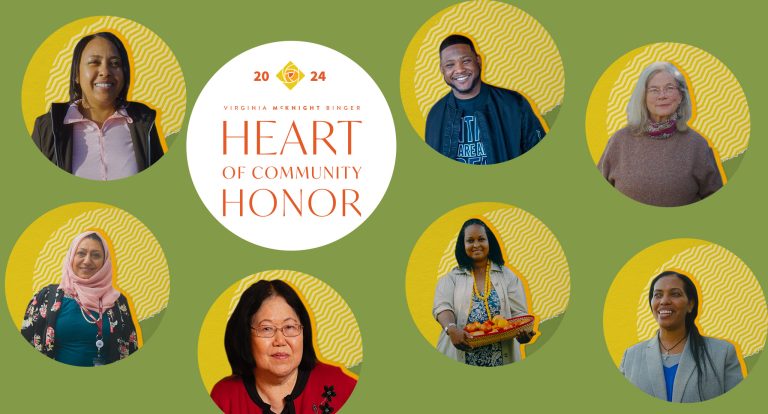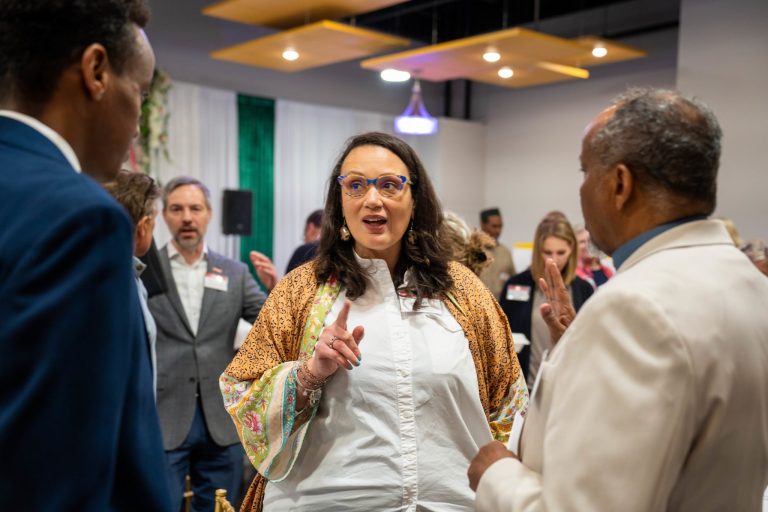When McKnight released its Statement on Diversity, Equity, and Inclusion (DEI) in January, we promised to keep everyone posted on any subsequent changes in our policies and practices. As we continue to live out our DEI commitment, one of the first changes is to rigorously collect demographic data from grant applicants. I am thrilled to invite you to partner with us.
So, you may be asking, what exactly does demographic data collection mean? For our purposes, it means we are adding some new DEI questions to our grant application process for organizations based in the United States. Our grant form will soon ask applicants to supply some basic demographics about their staff and boards, such as race/ethnicity, gender, sexual orientation, geography, and disability status. It will also include questions such as whether an organization has an approach to an inclusive workspace and how a proposal would advance equity.
We believe this new DEI information form will help us get to the heart of these mission-driven concerns:
- Are the organizations that we fund diverse and inclusive relative to their context?
- Do our grants help to decrease disparities and/or advance equity?
- What and whom are we missing?
A work group made up of McKnight staff from the grants management department and a wide cross section of program areas researched a variety of sector resources and drew from best practice standards to lay the groundwork for this new DEI information form. To ensure we wouldn’t be adding an undue burden, we also beta-tested the survey with some key grantees. We were heartened by their positive responses. Many said they’d long been collecting such data, and others felt encouraged that finally, their stories of diverse leadership and equity advancement would be valued and heard. But we also know that for some, this next step will bring some anxiety. We make no claims that this form is perfect, and we are still early in our journey on DEI—yet, we feel it’s imperative to keep putting one foot in front of the other, learning and adapting along the way.
Using Data for Greater Learning
In education, public health, government, philanthropy, and dozens of other fields, we’ve seen that collecting and analyzing disaggregated data can inject fresh thinking. There’s a significant body of evidence showing that this effort helps institutions adjust strategies and uncover hidden patterns. Data can help us identify stories we’ve been missing and gaps in our knowledge and networks. A clear example comes from the recent groundbreaking analysis of data on some 20 million children that proved race is a far more pernicious driver of income inequality than any other factor, including socioeconomic status.
“Data can help us identify stories we’ve been missing and gaps in our knowledge and networks.”
—KARA INAE CARLISLE, VICE PRESIDENT OF PROGRAMS
At McKnight, the new DEI information form will help to establish a baseline for us to learn about where we are investing our resources and offer greater transparency to others. We will use the insights gained from this new tool to inform shared learning, conduct broader equity analyses, and assess the extent to which our solutions are equitable and sustainable. We see this data tool as the first iteration of an evolving approach. It’s the start of a conversation—not the end of one.
We also recognize that grantees work to solve a variety of immense social challenges in complex contexts, and data needs to exist alongside story. That’s why we made sure to include space for organizations to tell us more about the contexts in which they work. This gives us yet another opportunity to listen and learn.
We understand that potential grantees will wonder what this means for their proposals. We see an organization’s answers on the DEI information form as one more data point we need to spur important conversations. As we deepen our understanding, analysis, and practice, McKnight’s new learnings on DEI will indeed get reflected in our grantmaking and other investments over time. For example, it may help us design new strategies as we look for assets we have yet to recognize, networks to leverage, or missed opportunities.
We’re excited about this next stage because we believe that better data will lead to greater impact, and may even disrupt spaces where the “common wisdom” isn’t working. We anticipate that this new tool will equip us with the critical knowledge we need—on both sides of the grantmaking process—to align our policies, practices, and resources so that people of all races, cultures, and socioeconomic positions will have genuine opportunities to thrive.
Update: A preview of the DEI form is available to prospective grantees for your planning purposes. Please do not fill out this pdf sample. The only way to submit the data is through the online application system. In addition, here is a tip sheet from the D5 Coalition about demographic data collection. Our website offers additional resources on DEI.
We understand that not everyone will be able to supply this information immediately, and there is an option for applicants to provide context for their work. We do encourage grantees to begin having conversations within their board and staff about what role diversity, equity, and inclusion plays in their organization and community.



